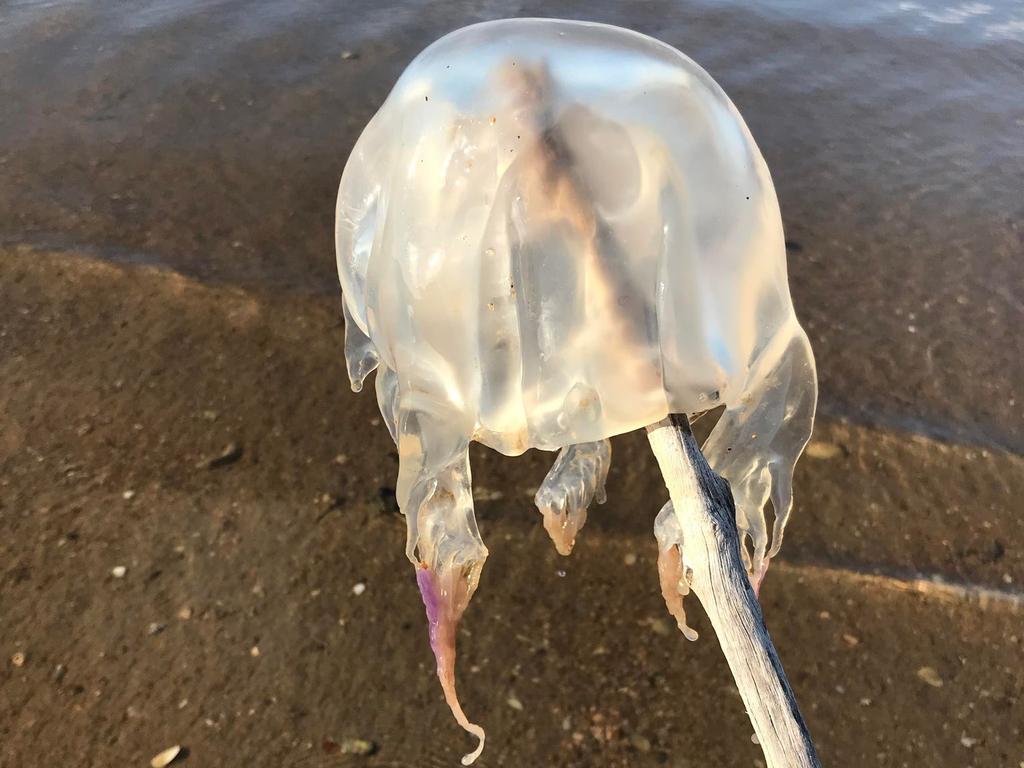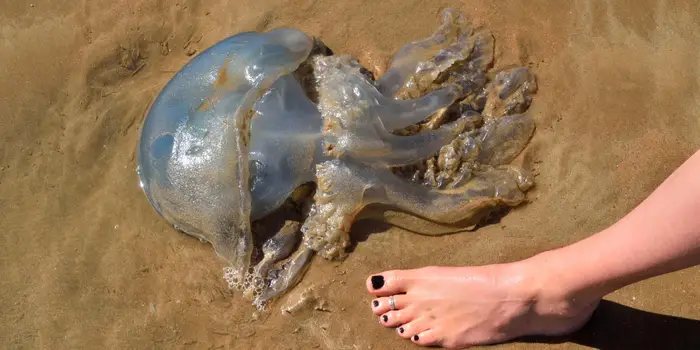Whether you’re surfing in the ocean or strolling along the shore, encountering a jellyfish sting can quickly ruin your beach day. Although these stings can be painful, the good news is that most jellyfish stings result in mild symptoms that can be treated with basic first aid. Experts provide essential information on identifying jellyfish stings, treatment steps, and recovery tips.

Recognizing a Jellyfish Sting
Jellyfish stings vary in appearance and severity, depending on the type of jellyfish. Dr. Jill Grimes, MD, FAAFP, author of “The ULTIMATE College Student Health Handbook,” explains that the first sign of a jellyfish sting is “immediate, severe pain.” Dr. Luke Maxfield, a board-certified dermatologist, adds that mild reactions may appear as raised red bumps that merge into larger plaques. The sting’s pattern will mimic the jellyfish’s tentacles, creating distinctive, temporary “tattoos.”
Some individuals may experience delayed reactions, such as inflammation and persistent hyperpigmentation following the tentacle tracks. Severe reactions can cause painful blistering, and encounters with venomous jellyfish may lead to skin necrosis. While rare in U.S. coastal areas, stings from species like box jellyfish, Portuguese man-of-war, lion’s mane, and sea nettle require urgent medical attention. Symptoms such as abdominal pain, breathing difficulties, muscle spasms, or heart issues necessitate emergency care.
Effective Treatment Methods
If you feel stings while swimming, exit the water immediately. Contrary to popular belief, urinating on the sting is not recommended as it can cause additional toxin release from the jellyfish’s nematocysts. Similarly, avoid using tap water for rinsing the sting. Instead, rinse with ocean water to prevent further toxin discharge. To remove tentacle fragments, use tweezers or scrape them off with a credit card rather than using your hands. To alleviate itching and burning, apply a cool compress—ice wrapped in a towel, never directly on the skin. Dr. Grimes suggests using a topical steroid cream or ointment on the affected area, except on the face or genitals, which require medical attention. Oral antihistamines like diphenhydramine, fexofenadine, loratadine, and cetirizine can also help reduce symptoms.

Recovery Time and Healing
The acute phase of a jellyfish sting typically lasts a few days and may worsen before improvement begins. Over a week, the skin will start to heal. After the acute phase, delayed hyperpigmentation can remain at the sting site. The duration for this pigmentation to fade varies, taking anywhere from one to two weeks to a month. Understanding how to identify and treat jellyfish stings can help ensure a safe and enjoyable time by the water. Following expert advice on treatment and being mindful of severe symptoms can significantly aid in a swift recovery.
